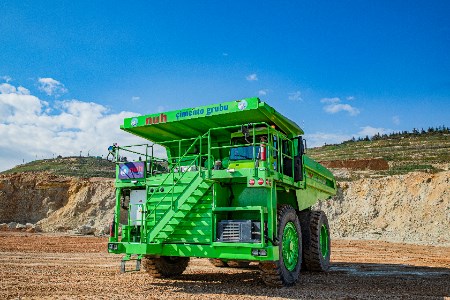Although the International Council on Mining and Metals (ICMM) members, which include all largest mining operators, committed to achieve net zero Scope 1 and 2 Greenhouse Gas emissions by 2050 or sooner, the mining sector remains in the early stages of its decarbonisation journey.
There is an opportunity for a significant acceleration in the reduction of emissions through the use of fleet electrification and enhanced energy efficiency. These are not the only tools at miners’ disposal, but they are two of the most transformational.
Electrification
The main opportunity for electrification in mining is in taking the trucks and other transportation vehicles which predominantly run on diesel fuel and switching to electric drive trains.
In some cases, this is being done through retrofitting existing trucks. Rather than scrapping and replacing original vehicles, which would involve disposing of several tons of material and significant investment to purchase a new vehicle, miners can upgrade their existing fleet for a fraction of the cost. This approach saves several million dollars and boosts greater returns on the initial investment made on the original vehicles.
Demand in this area has been increasing for several years, and there is a growing range of solutions on the market. ABB has recently successfully completed the retrofit of a Nuh Cement haul truck from diesel to zero-emission. In addition to the economic efficiencies, the retrofitting of one truck saves approximately 100 000 l of diesel fuel and prevent 245 tpy of CO2 emissions, equivalent to 58 gasoline-powered passenger vehicles driven for one year.
The use of electric drivetrain in place of a diesel engine offers significantly lower operating costs via elimination of fuel costs and reduction of maintenance costs by approximately 30%. In addition, the truck operates with higher performance, thereby increasing the vehicles productivity. On-site workers also benefit from the switch to electric propulsion through reduced noise, less vibration, and a cleaner work environment.
Energy efficiency
Answering the question of energy waste is the key to unlocking viable electrification at scale. That answer lies in how electric power is deployed – and recovered.
For example, a solution developed by ABB is used in Hitachi Construction Machinery’s fully electric dump truck. It uses an onboard electric system that draws energy from a trolley supply to power the truck’s motor directly, as well as charging its battery system. When running downhill, a regenerative braking system charges the battery, which reduces the charging load when the truck is connected to the trolley. This enables the truck to stay in continuous operation with no charging breaks, maintaining high productivity.
Challenges and future direction
The industry is making significant strides towards decarbonising the mining sector, but there are still challenges to overcome. Like the interface between infrastructure and vehicles, the charging infrastructure, the evolution of battery technology, interoperability between the systems of different suppliers and increased electricity demand. The pressure to decarbonise the mining industry will increase since shareholders, customers, and legislators are demanding that miners accelerate the decarbonisation of their operations, leading to a future with greater focus on fleet electrification and a stronger emphasis on efficiency.


